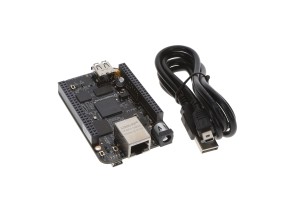From counterfeit components to supply chain disruptions and environmental concerns, the landscape is rife with complexities that demand innovative solutions and strategic approaches. In this blog, we delve deep into the key challenges buyers encounter when purchasing electronic components and explore actionable strategies to overcome these obstacles, ensuring a seamless procurement process and optimal component performance.
Unmasking the Challenges:
1. Counterfeit Components
Counterfeit components pose a significant threat to product integrity and performance. To combat this issue, buyers can implement the following strategies:
● Source components from authorized distributors or manufacturers.
● Conduct thorough inspections and tests to verify component authenticity.
● Utilize anti-counterfeiting technologies like holographic labels or RFID tags.
2. Supply Chain Disruptions
Disruptions in the supply chain can lead to delays and impact production schedules. Buyers can mitigate this risk by:
● Diversifying suppliers to reduce dependency on a single source.
● Implementing supply chain visibility tools to track inventory and anticipate disruptions.
● Establishing strong relationships with suppliers for open communication and proactive risk management.
3. Quality and Reliability
Ensuring the quality and reliability of electronic components is crucial for product performance. Buyers can enhance quality control by :
● Requesting samples for testing and evaluation before bulk purchases.
● Performing reliability tests and inspections to validate component quality.
● Prioritizing suppliers with a proven track record of delivering high-quality components.
4. Product Obsolescence
Product obsolescence can impact long-term product sustainability. Buyers can address this challenge by:
● Monitoring industry trends and technology advancements to anticipate obsolescence risks.
● Engaging with suppliers to discuss product lifecycle and availability.
● Implementing design flexibility to accommodate future component upgrades.
5. Compliance and Certification
Adhering to industry regulations and standards is essential for product legality and safety. Buyers can ensure compliance by:
● Working with suppliers that maintain certifications and compliance with relevant standards.
● Conducting audits and assessments to verify supplier compliance practices.
● Staying informed about regulatory updates and changes that may impact component sourcing.
6. Cost and Pricing
Balancing cost considerations with component quality is a common buyer concern. Buyers can optimize cost-effectiveness by:
● Negotiating pricing with suppliers based on volume purchases and long-term partnerships.
● Comparing quotes from multiple suppliers to identify cost-effective options.
● Evaluating total cost of ownership, including maintenance and warranty expenses, to make informed decisions.
7. Technical Support and Documentation
Access to comprehensive technical support and documentation is vital for successful component integration. Buyers can enhance support by:
● Engaging with suppliers that offer responsive technical assistance and troubleshooting.
● Requesting detailed datasheets, application notes, and user manuals for reference.
● Investing in training programs for staff to enhance technical expertise and knowledge.
8. Environmental and Sustainability Practices
Increasingly, buyers prioritize environmentally friendly components and sustainable practices. Buyers can support sustainability initiatives by:
● Choosing suppliers with green certifications and sustainable manufacturing practices.
● Opting for components with reduced environmental impact and recyclability.
● Collaborating with suppliers to promote eco-friendly initiatives and reduce carbon footprint.
Empowering Buyers in the Electronic Component Ecosystem
In the dynamic world of electronic components, buyers wield significant influence in shaping the procurement landscape and driving industry standards. By proactively addressing challenges such as counterfeit components, supply chain disruptions, quality concerns, and sustainability practices, buyers can navigate the complex terrain of component sourcing with confidence and integrity. Through strategic partnerships, continuous vigilance, and a commitment to excellence, buyers can overcome obstacles, optimize procurement processes, and propel innovation in the electronic component ecosystem.

